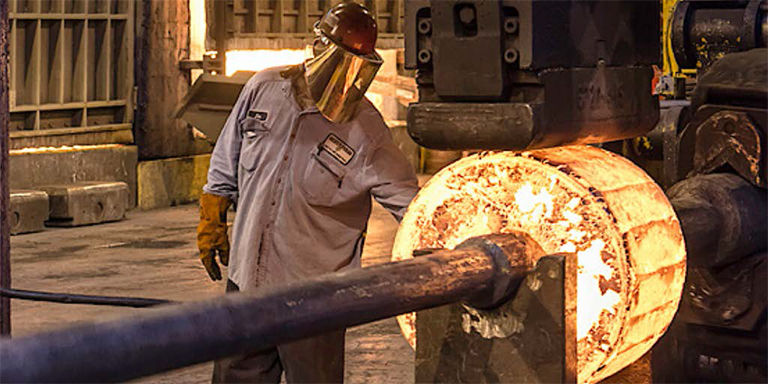Open Die Forging or Closed Die Forging: Which is better?
- SCOT FORGE
- Nov 15, 2019
- 3 min read
Updated: Jan 18
The question, “Open Die Forging or Closed Die Forging: Which is better?” can be answered simply. It depends; both processes have their advantages and disadvantages.

The question, “Open Die Forging or Closed Die Forging: Which is better?” can be answered simply. It depends; both processes have their advantages and disadvantages.
Closed-Die Forging
Closed die forgings, also known as impression-die forgings, are considered suitable for complex parts because they force metal into a predetermined shape, which can be something with intricate curves or multiple surface heights. Additionally, closed-die forgings are advantageous for parts that must be mass-produced. The closed-die forging process starts with heating metal to a malleable state, without liquefying it. The metal is then placed between two preformed dies, which resemble a mold. These dies are either pressed or hammered towards each other to guide the metal, making it flow to fill the desired shape. This process will result in a buildup of excess metal along the outer edge of the forging; this is known as flash, which must be cut away.
The actual process of closed-die forging is where you can find the disadvantages of this type of forging. Because closed-die forging forces metal into shape, there is a possibility that the metal won’t fill all of the crevasses, creating an incomplete part wasting time and resources. To anticipate the likelihood of this happening, Forging Engineers use software to predict the outcomes of the closed-die process. But, even then, because you cannot see the part being forged, there is a possibility that the forging won’t meet specifications. Next, once the forge engineers have designed dies for the part, the dies need to be created, which can a holdup the process because it takes time and money to create them. Finally, when forging with a closed-die, there is the problem of the workpiece cooling at different rates. For example, the flashing cools much faster than the inside of the part, which affects the toughness and strength of the metal, possibly compromising the integrity of the part.
Open-die forgings, or hammer forgings, are advantageous for shapes like discs, hubs, blocks, shafts (including step shafts or with flanges), sleeves, cylinders, flats, hexes, rounds, plate and some custom shapes, which require artistic finesse or custom work. Open-die forging begins with an ingot, a piece of cast metal, which is put into a furnace until it is ductile. Once in this state, the ingot is moved to the anvil, or the press depending on the size of the operation, where the blacksmith hammers the pliable ingot into shape. Since open-die forging doesn’t require custom-created dies, it can be a faster, more cost-effective technique. To get the desired shape with open-die forging, the blacksmith moves and orients the workpiece between hammer drops to force the metal to flow a certain way. Generally, the hammer has flat dies, but on occasion, a simple-shaped die is used for specialized pieces.
The disadvantage to the process of open-die forging is that, because this process is not as precise, the forgings tend to need machining after the piece is forged. But, the disadvantages of open-die forging tend to be mitigated when using a tenured company that can specialize in near-net shaped forgings. Advanced forge shops now offer shapes that were never before thought capable of being produced by the open-die forging process.
In conclusion, every project is different from the turnaround time to requirements; and knowing what process is best suited for your project may depend on the capabilities of the forging partner you are working with. Not all forging companies are equal, so the key to getting a successful forging is finding a company who is a true partner that will work to save you time and money with capabilities that are time tested. Scot Forge has more than 126 years of experience in making custom forgings. If you think you need a forging, let our forging experts take a look and help you find a solution that is right for you, contact us today.






תגובות